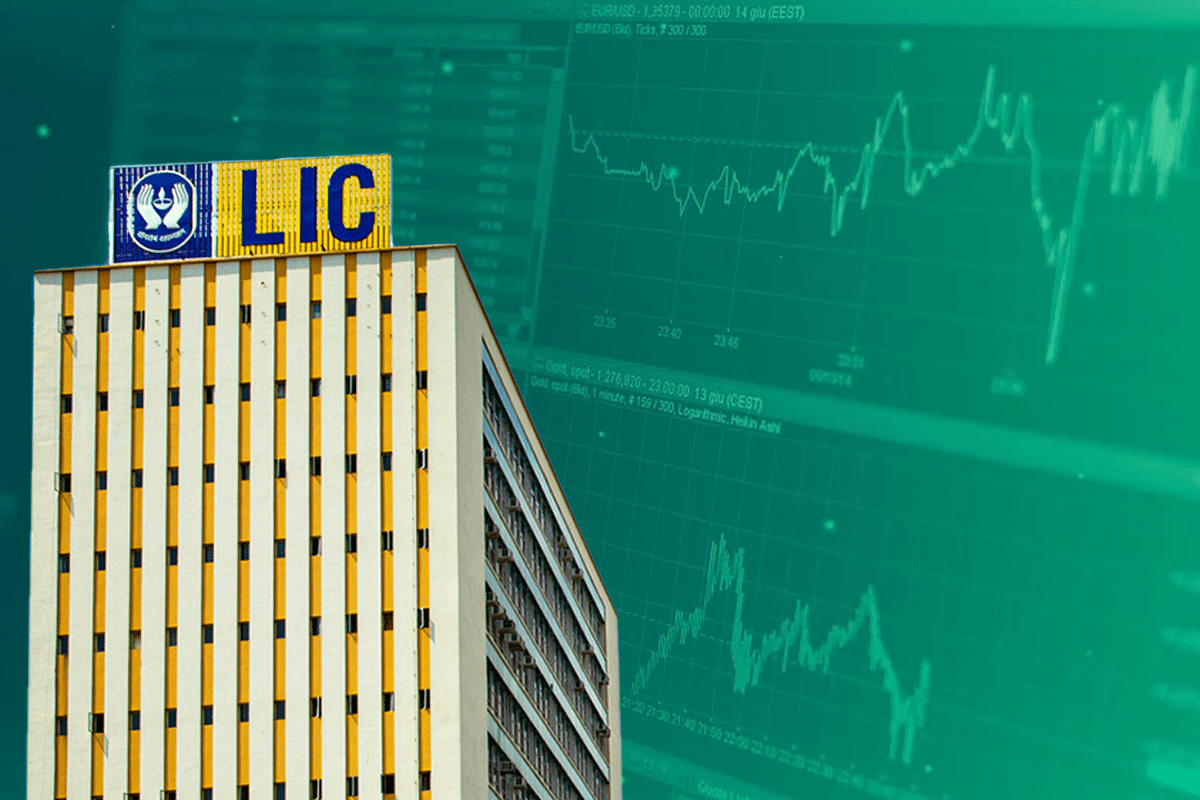Business
LIC's Share Is Under Water: What Government Can Do To Revive Market Interest
- Two ideas worth considering are a deeply discounted rights issue and the promise of a buyback if the shares remain below a certain level after three years.

Government must help revive interest in LIC stocks.
The Life Insurance Corporation of India (LIC), which got itself listed in mid-May after huge oversubscriptions from retail investors and policyholders, has given them nothing but heartburn since then.
As things stand, the offloading of 3.5 per cent in the corporation has resulted in huge (notional) losses to those who subscribed, even after taking into account the generous discounts offered to policyholders (at Rs 889, against an issue price of Rs 949), and retail investors (at Rs 904).
The share was being quoted around mid-morning on 19 July at Rs 692, a sharp 27 per cent discount to the issue price. Even brokerages with a more generous inclination towards this national insurance behemoth have set a target price of only Rs 830 (Motilal Oswal), which is below what policyholders and retail investors paid for the share.
As expected, another public sector company is up against a simple reality: no matter how strong it is financially, the smart investor will hold it only at discounted prices to private sector peers. Even at current prices, LIC’s price to book value multiple is at a hefty 42, against 8.5 for HDFC Life — which indicates that it may still be seen as overvalued.
Moreover, there is always a discount for alleged political meddling in its working. The fear is that, public sector organisations will be asked to bear the costs of non-profitable public service operations.
This does not mean that listing the LIC was a bad idea; at the very least, by opening its performance to public scrutiny, the management will try harder to deliver on promises. But there is no doubt that both the government and the corporation need to be more commercially savvy in dealing with the expectations of public investors, if reputation and market valuations are to be salvaged.
At current prices, LIC's market cap is just over Rs 4.37 lakh crore, a far cry from where it started in mid-May — around Rs 6 lakh crore. That’s a huge amount of wealth destruction in just over two months of listing.
So, what can the government do to salvage both its own reputation and that of the LIC?
Over the long term, LIC can indeed do better on profits and market valuations as it shifts to more profitable non-participating policies (term insurance, ULIPS, etc), and sells more policies digitally instead of its costly agent network, but some smart action is required in the short run too.
Two ideas worth considering are a deeply discounted rights issue and the promise of a buyback if the shares remain below a certain level after three years.
For example, if the government were to dilute another 1.5 per cent to existing shareholders at, say, Rs 500 a share, it would raise money for itself (at a lower valuation, of course) and also rebuild interest in the share at the retail or even institutional level.
Also, the corporation can say that if the share remains at low levels for an extended period, it will consider a buyback after, say, two or three years. This could mean delisting, since there is not much of an outstanding stake to buy back. But if the value destruction continues, that is an option the government should consider. It can also come at no cost to itself, for LIC will pay for the buyback from its own profits.
What the government cannot do is destroy public confidence in a crown jewel, when it is still a crown jewel.
Support Swarajya's 50 Ground Reports Project & Sponsor A Story
Every general election Swarajya does a 50 ground reports project.
Aimed only at serious readers and those who appreciate the nuances of political undercurrents, the project provides a sense of India's electoral landscape. As you know, these reports are produced after considerable investment of travel, time and effort on the ground.
This time too we've kicked off the project in style and have covered over 30 constituencies already. If you're someone who appreciates such work and have enjoyed our coverage please consider sponsoring a ground report for just Rs 2999 to Rs 19,999 - it goes a long way in helping us produce more quality reportage.
You can also back this project by becoming a subscriber for as little as Rs 999 - so do click on this links and choose a plan that suits you and back us.
Click below to contribute.
Latest